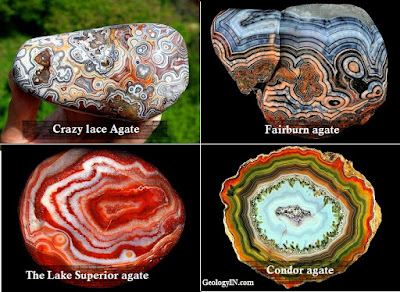How to Identify Common Minerals?
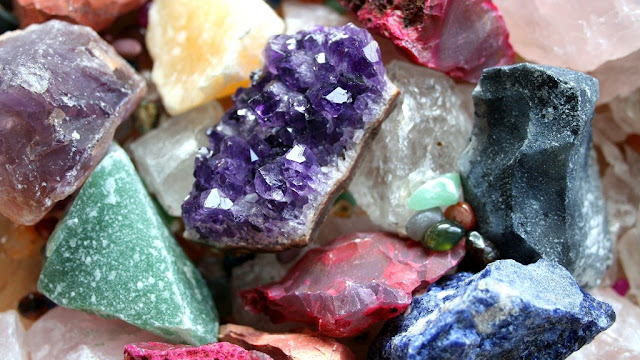 |
| photograph: ConexionCristalina |
Common Rock-Forming Minerals
Since minerals are the constructing blocks of rocks, it will be significant that you simply study to determine the most typical varieties. Minerals might be distinguished utilizing numerous bodily and/or chemical traits, however, since chemistry can’t be decided readily within the area, geologists use the bodily properties of minerals to determine them.
These embrace options akin to crystal type, hardness (relative to a metal blade otherwise you finger nail), colour, lustre, and streak (the color when a mineral is floor to a powder). Generally the traits listed above can solely be decided if the mineral grains are seen in a rock. Thus the identification key distinguishes between rocks by which the grains are seen and people through which the person mineral elements are too small to determine.
The descriptions under use numerous phrases or numbers to explain the mineral’s form, hardness, look after breaking, or different attributes. If you are unsure what these imply, confer with How to Identify Minerals in 10 Steps (Photos).
Crystalline minerals are most frequently quartz.
 |
| Quartz cluster |
Quartz is a particularly widespread mineral, and its glittering or crystalline look catches the attention of many collectors. Quartz has a hardness of seven on the Mohs scale, and demonstrates any sort of fracture when damaged, by no means the flat floor of cleavage. It doesn’t depart a noticeable streak on white porcelain. It has a glassy luster, or shine.
- Milky quartz is white quartz. The white shade comes from carbon dioxide fuel trapped inside the quartz construction. Milky quartz is often large, however nicely properly-shaped crystals are additionally widespread. In the Huachuca mountains, milky quartz happens a a filling materials in fractures (mineral veins). All quartz has a hardness of seven on Mohs scale of hardness and may simply scratch glass. Milky quartz is shiny and translucent. Quartz has no cleavage and breaks with a fracture that ranges from conchoidal to irregular.
- Rose quartz is quite a lot of large, translucent quartz with a pink colour. It has no cleavage, it breaks with a conchoidal fracture, and it has a shiny floor. Depending on high quality, it may be used as a gemstone or an ornamental backyard stone. Two main occurrences of rose quartz are Maine and the Black Hills of South Dakota.
- Amethyst is purple quartz. It can happen as properly-shaped quartz crystals in geodes or deformed crystals in a mineral vein. If the standard is excessive sufficient, amethyst is used as a gemstone. The luster of amethyst is often vitreous (shiny).
Read: Major varieties of quartz with photos
Hard, glassy minerals with out crystals could also be a special sort of quartz, referred to as chert.
 |
| Chert with flint |
All forms of quartz are crystalline, however some varieties, referred to as “cryptocrystalline,” are product of minuscule crystals not seen to the attention.If the mineral has a hardness of seven, fractures, and has a glassy luster, it might be a kind of quartz referred to as chert. This is mostly brown or gray.
- “Flint” is one number of chert, however it’s categorized in many various methods. For occasion, some individuals might check with any black chert as flint, whereas others might solely name it flint if it has a sure luster or was discovered amongst sure forms of rock.
Minerals with striped bands are often a kind of chalcedony.
Chalcedony is shaped from a mixtures of quartz and one other mineral, moganite. There are many beautiful varieties, sometimes forming striped bands of various colours. Here are two of the most typical:
- Onyx is a kind of chalcedony that tends to have parallel bands. It is most frequently black or white, however may be many colours.
- Agate has extra curving or “wiggly” bands, and may present up in all kinds of various colours. It can type from pure quartz, chalcedony, or comparable minerals.
See also: Funny weird agate specimens you should see
See in case your mineral’s traits match feldspar’s
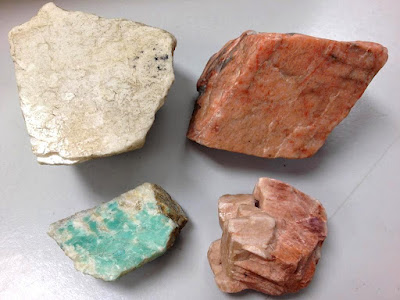 |
| Orthoclase,plagioclase and amazonite photograph: StudyBlue Inc |
Besides the various types of quartz, feldspar is the most typical sort of mineral discovered. Feldspar is the opposite widespread, mild-colored rock-forming mineral. Instead of being glassy like quartz, it’s usually uninteresting to opaque with a porcelain-like look. Colour varies from pink, pink, and white (orthoclase) to inexperienced, gray and white (plagioclase). Feldspar can also be arduous however could be scratched by quartz. Feldspar in igneous rocks varieties properly developed crystals that are roughly rectangular in form, they usually cleave or break alongside flat faces. The grains, in distinction to quartz, typically have straight edges and flat rectangular faces, a few of which meet at proper angles.
If the mineral peels when rubbed, it’s in all probability mica.
 |
| Muscovite and Biotite |
Mica is definitely distinguished by its attribute of peeling into many skinny flat clean sheets or flakes. This is just like the cleavage in feldspar besides that within the case of mica the cleavage planes are in just one course and no proper angle face joins happen. Mica could also be white and pearly (muscovite) or darkish and glossy (biotite).
- Muscovite mica is colorless to a really pale brown in colour. It peels simply into very skinny, versatile, elastic sheets which are almost colorless. Muscovite is also called white mica.
- Biotite mica ranges from darkish brown to black. It additionally peels in very skinny, versatile, elastic sheets like muscovite mica. Biotite is also referred to as black mica.
 |
| Copyright ©Mark Steinmetz |
Pyrite is also referred to as “fools gold” as a result of it has a yellow metallic colour. Pyrite may be distinguished from native gold by a number of totally different properties. Pyrite is far more durable than gold; it can’t be scratched by a metal straight pin. Pyrite is brittle; it may be crushed to a powder, whereas gold merely flattens out as a result of it’s a metallic. A streak check can even distinguish pyrite from gold; pyrite produces a greenish black streak and gold produces a yellow streak.
- Marcasite is one other widespread mineral just like pyrite. While pyrite crystals are formed like cubes, marcasite types needles.
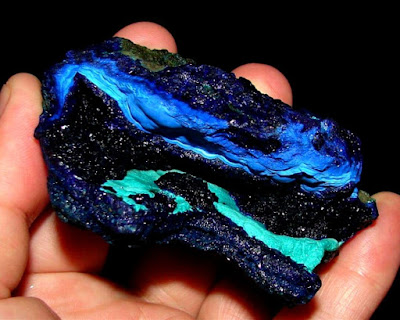 |
| Stunning piece of azurite and malachite from China! |
Both of those minerals include copper, amongst different minerals. The copper provides malachite its wealthy inexperienced colour, whereas it causes azurite to seem vibrant blue. These typically happen collectively, and each have a hardness between A and A.
- Azurite is a brilliant blue mineral related to copper ore. It might happen with inexperienced malachite, additionally a copper ore. It is comparatively smooth at A.H on Mohs scale of hardness.
- Malachite is a wealthy inexperienced to darkish inexperienced copper mineral. It can happen by itself or with azurite, a mineral that it’s intently associated to in chemistry. It is comparatively delicate at A.H on Mohs scale of hardness.
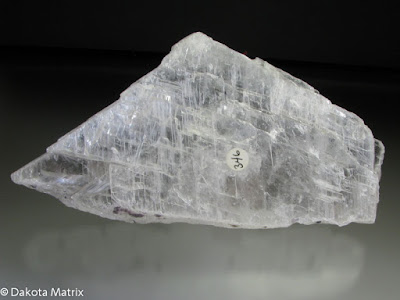 |
| Gypsum from Annabel Lee mine, Hardin Co., Illinois, United States. credit score: Dakota Matrix Minerals |
Gypsum is a gentle, mild-coloured mineral. Its shade might be colorless and clear (selenite) or white, pale pink or pale brown. If crystallized, it shows one course of fantastic cleavage, however the cleavage fragments are a lot thicker than these of mica and the fragments aren’t elastic. Generally, it lacks the greasy really feel of talc.
- One type of gypsum tends to type with a fibrous construction (satinspar).
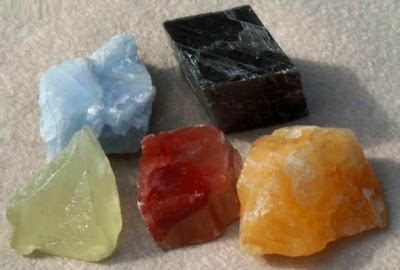 |
| number of colours and types of calcite |
Calcite is a quite common mineral. The problem in figuring out it’s that may happen in a really giant number of colours and varieties. One of the most typical types of calcite crystals are pointy pyramids that resemble a canine’s canine tooth (dogtoothspar). Large, pure items of crystalline calcite show three instructions of cleavage which might be inclined (not at ninety levels).
Calcite ranges from clear to translucent. Colors could also be colorless, white, cream, pale yellow, yellow-brown, brown, and even pink on account of impurities. The best method to distinguish calcite is with an acid check; concentrated hydrochloric acid with trigger ample bubbles to type because it reacts with the calcite.
Commonly fluorescent in quite a lot of colours: Fluorite
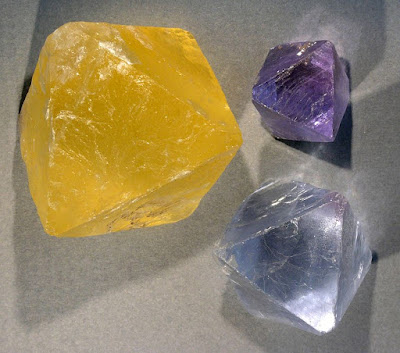 |
| Fluorite-Octahedron. Photo: Hannes Grobe |
It is usually straightforward to mistake fluorite for calcite on a fast examination. However, in case you pay cautious consideration, fluorite has 4 instructions of cleavage in comparison with three instructions of cleavage for calcite. Fluorite can also be more durable than calcite (A on Mohs scale of hardness) and may scratch a bit of calcite. Fluorite is usually extra colourful than calcite and may be purple, inexperienced, yellow, pink, brown, or colorless and should even present two or extra colours on the identical specimen. Fluorite crystals are often cubes or octahedrons. Above all, fluorite doesn’t fizz in touch with hydrochloric acid.
Read also: Why Fluorite Comes in Different Colors? With Examples
It is strongly interested in magnetic fields: Magnetite
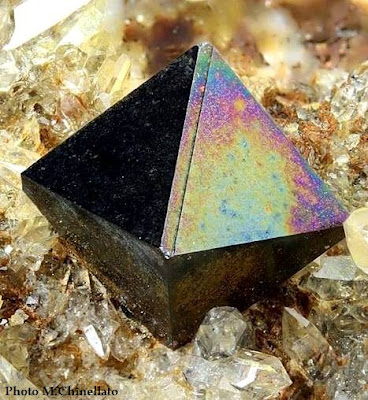 |
| Perfect octahedron Magnetite from Formazza Valley, Verbano-Cusio-Ossola Province, Piedmont, Italy. Collection & Photo M.Chinellato |
Magnetite is widespread in igneous and metamorphic rocks, and a few sediments, although often in solely small quantities (M – P %). It is black in color with a metallic lustre, occurring in small octahedra (like two pyramids caught collectively). Easily acknowledged by its strongly magnetic character.
